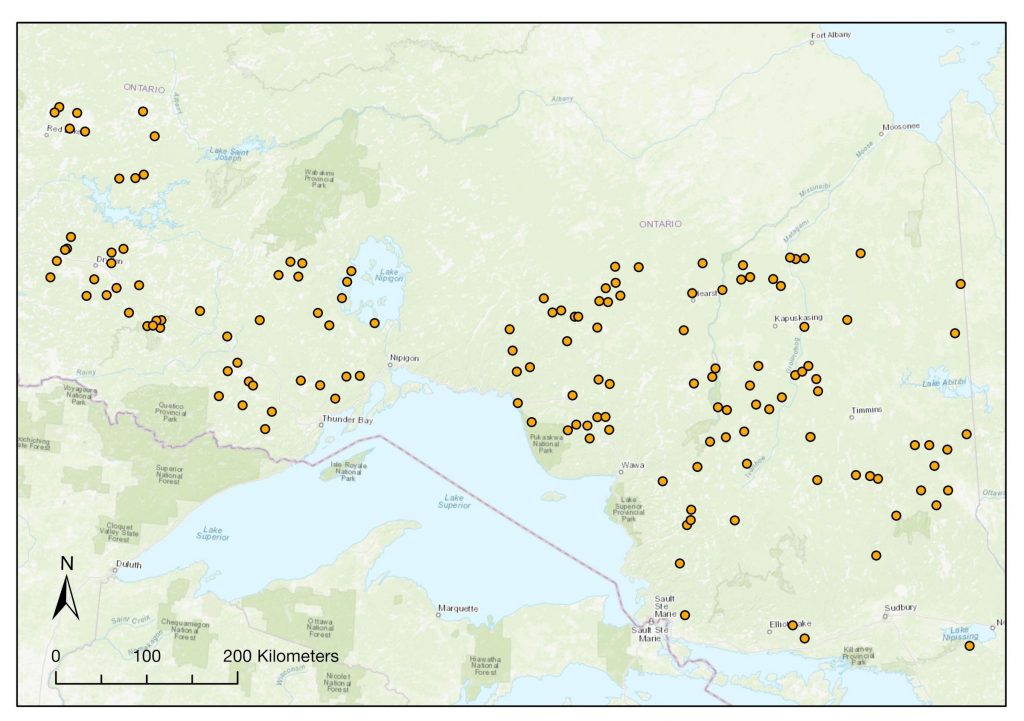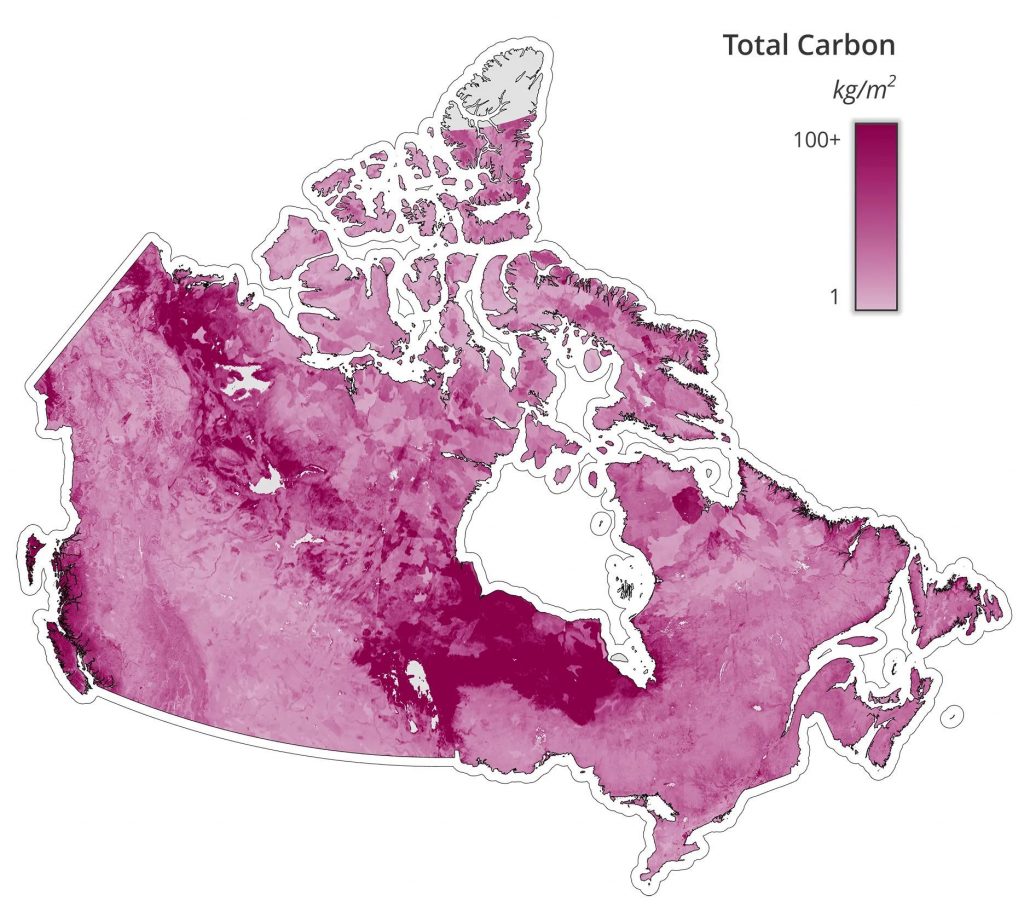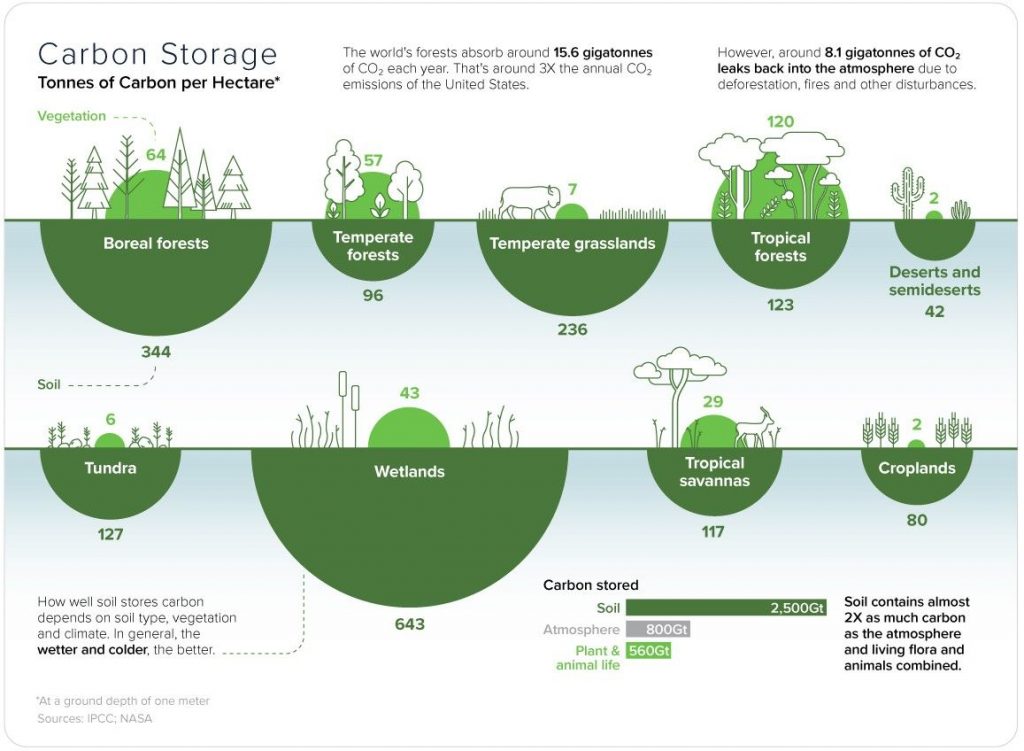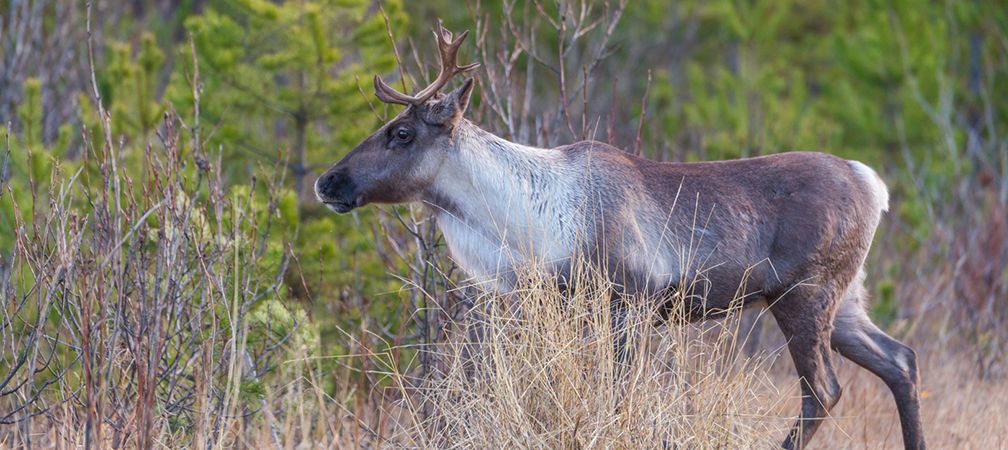Ontario Nature Blog
Receive email alerts about breaking conservation
and environmental news.
© Lora Denis
White River wetlands © What-A-Ride CC BY-NC-ND 2.0
There is an urgent need for solutions to climate change, as temperatures and greenhouse gas emissions continue to increase. The latest Intergovernmental Panel on Climate Change (IPCC) report warns that immediate action is needed to limit global warming. One effective way to tackle climate change and biodiversity loss is through the protection of natural areas, as nature-based climate change solutions. As part of the 2030 Emissions Reduction Plan, the federal government has recently committed to investing in these solutions, particularly to conserve wetlands, peatlands and grasslands to store and capture carbon.
Canada has also committed to protecting 25% of lands and waters by 2025, and 30% by 2030. As of 2021, 13.5% of Canada’s land mass and freshwater are protected. In Ontario, only 10.9% is protected. One opportunity for increasing protected areas is through the permanent protection of Forest Stewardship Council (FSC) designated conservation lands. FSC is a world-renowned forestry standard that requires FSC-certified forestry companies to identify 10% of their managed forests for protection (in regulated protected areas that are recognized by governments and/or designated conservation lands which are voluntarily set aside by forestry companies). They are required to work within their “sphere of influence” (e.g., relationships with government) to seek permanent protection of the designated conservation lands.
There are over 147 designated conservation lands that have been identified through FSC certification in Ontario, which span more than 1 million hectares across northern and eastern Ontario.

As Ontario Nature’s Nature-Based Climate Solutions Analyst, I have begun to evaluate the carbon storage of these FSC designated conservation lands and other candidate protected areas. Our Protected Places team wanted to know: how much carbon do these sites store and how could they potentially contribute to climate change mitigation? To answer this question, we tested a variety of models to assess the amount of carbon that is currently stored in trees, roots and soils in these sites.
We compared the FSC designated conservation lands with the national carbon maps created by WWF-Canada and McMaster University’s Remote Sensing Lab in 2021. Their report shows that Ontario stores over 57 billion tonnes of carbon in terrestrial ecosystems – which is the same amount of carbon released as over four years of human-caused global greenhouse gas emissions at 2019 levels. Most of this carbon is stored in soils, particularly in peatlands. The following map shows that FSC designated conservation lands in Ontario store over 400 million tonnes of carbon!

We also tested other models (Integrated Valuation of Ecosystem Services and Tradeoffs [InVEST] and ARtificial Intelligence for Environment & Sustainability [ARIES]) and found a large amount of carbon stored across Ontario, including FSC designated conservation lands. Wetland and forested ecosystems, including bogs and coniferous forests, store the most amount of carbon. We also found that designated conservation lands store more carbon than the surrounding forest managed for industrial extraction, indicating that these areas present a significant opportunity to keep stored carbon in the ground. There are over 48 million hectares of FSC-certified forest in Canada, indicating that there is the potential to protect FSC designated conservation lands across Canada to contribute to the federal government’s commitment to protect 25% of Canada’s lands and waters.

It’s important to note that there are limitations to these models. They are a simplification of the carbon cycle and therefore usually do not fully account for dynamic changes that occur within landscapes where carbon is released naturally from trees (e.g., through forest fires) or when it moves from trees to soils as organic matter decomposes. Also, there is not one established technique to assess carbon storage, so we’ve met with carbon experts from multiple organizations and institutions to discuss our methods and implement their recommendations into our carbon assessment approaches.
We are continuing to evaluate carbon storage and improve the accuracy of our models, but clearly FSC designated conservation lands present an opportunity to combat climate change through the protection of these carbon-dense ecosystems. Massive amounts of carbon could be released into the atmosphere if these areas are open to industrial development, particularly any activities that disturb the soils. Protecting these sites would also provide co-benefits for biodiversity – for example by preserving habitat for at-risk species like boreal caribou and wood turtles. Across Canada, the permanent protection of these sites would keep millions, if not billions, of tonnes of carbon in the ground.

This project is funded by the Metcalf Foundation, the Career Launcher Internships program supported by the Government of Canada, an anonymous donor, and Ontario Nature’s donors and supporters.
To learn more about our work with FSC, watch our video “Protecting 1 million hectares in FSC-certified forests” and visit our Story Map to learn about FSC designated conservation lands and other candidate areas.
You can join us in protecting one million hectares of northern Ontario forests and wetlands by donating here: ontarionature.thankyou4caring.org/donation-pages/protected-places.

Gananoque Lake Nature Reserve © Smera Sukumar